Mona Jaber
Intelligent Travel Activity Monitoring: Generalized Distributed Acoustic Sensing Approaches
Jun 11, 2025Abstract:Obtaining data on active travel activities such as walking, jogging, and cycling is important for refining sustainable transportation systems (STS). Effectively monitoring these activities not only requires sensing solutions to have a joint feature of being accurate, economical, and privacy-preserving, but also enough generalizability to adapt to different climate environments and deployment conditions. In order to provide a generalized sensing solution, a deep learning (DL)-enhanced distributed acoustic sensing (DAS) system for monitoring active travel activities is proposed. By leveraging the ambient vibrations captured by DAS, this scheme infers motion patterns without relying on image-based or wearable devices, thereby addressing privacy concerns. We conduct real-world experiments in two geographically distinct locations and collect comprehensive datasets to evaluate the performance of the proposed system. To address the generalization challenges posed by heterogeneous deployment environments, we propose two solutions according to network availability: 1) an Internet-of-Things (IoT) scheme based on federated learning (FL) is proposed, and it enables geographically different DAS nodes to be trained collaboratively to improve generalizability; 2) an off-line initialization approach enabled by meta-learning is proposed to develop high-generality initialization for DL models and to enable rapid model fine-tuning with limited data samples, facilitating generalization at newly established or isolated DAS nodes. Experimental results of the walking and cycling classification problem demonstrate the performance and generalizability of the proposed DL-enhanced DAS system, paving the way for practical, large-scale DAS monitoring of active travel.
A low complexity contextual stacked ensemble-learning approach for pedestrian intent prediction
Oct 16, 2024



Abstract:Walking as a form of active travel is essential in promoting sustainable transport. It is thus crucial to accurately predict pedestrian crossing intention and avoid collisions, especially with the advent of autonomous and advanced driver-assisted vehicles. Current research leverages computer vision and machine learning advances to predict near-misses; however, this often requires high computation power to yield reliable results. In contrast, this work proposes a low-complexity ensemble-learning approach that employs contextual data for predicting the pedestrian's intent for crossing. The pedestrian is first detected, and their image is then compressed using skeleton-ization, and contextual information is added into a stacked ensemble-learning approach. Our experiments on different datasets achieve similar pedestrian intent prediction performance as the state-of-the-art approaches with 99.7% reduction in computational complexity. Our source code and trained models will be released upon paper acceptance
A Distributed Acoustic Sensor System for Intelligent Transportation using Deep Learning
Sep 13, 2022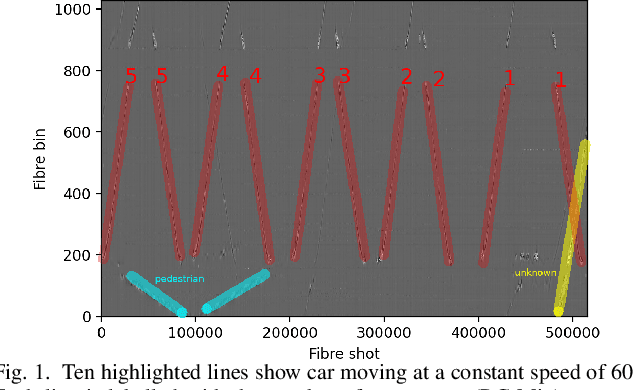
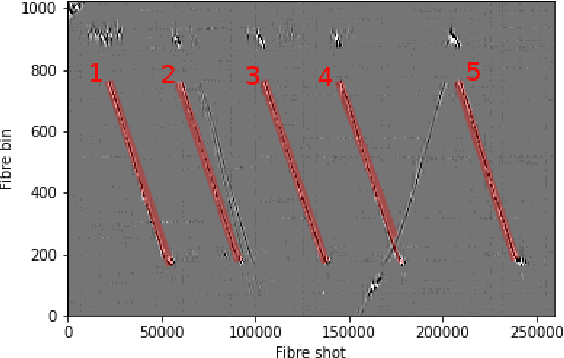
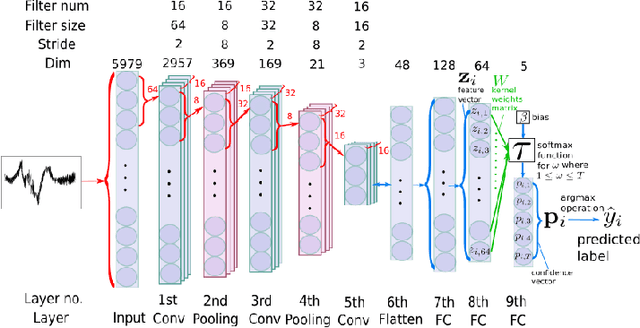
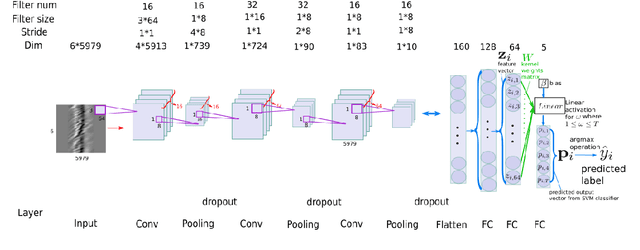
Abstract:Intelligent transport systems (ITS) are pivotal in the development of sustainable and green urban living. ITS is data-driven and enabled by the profusion of sensors ranging from pneumatic tubes to smart cameras. This work explores a novel data source based on optical fibre-based distributed acoustic sensors (DAS) for traffic analysis. Detecting the type of vehicle and estimating the occupancy of vehicles are prime concerns in ITS. The first is motivated by the need for tracking, controlling, and forecasting traffic flow. The second targets the regulation of high occupancy vehicle lanes in an attempt to reduce emissions and congestion. These tasks are often conducted by individuals inspecting vehicles or through the use of emerging computer vision technologies. The former is not scale-able nor efficient whereas the latter is intrusive to passengers' privacy. To this end, we propose a deep learning technique to analyse DAS signals to address this challenge through continuous sensing and without exposing personal information. We propose a deep learning method for processing DAS signals and achieve 92% vehicle classification accuracy and 92-97% in occupancy detection based on DAS data collected under controlled conditions.
Context-Aware Wireless Connectivity and Processing Unit Optimization for IoT Networks
Apr 30, 2020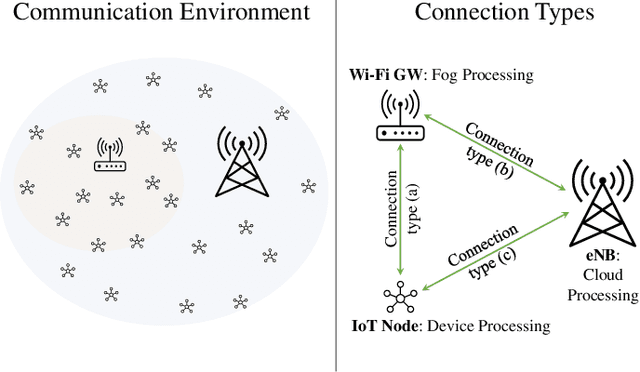
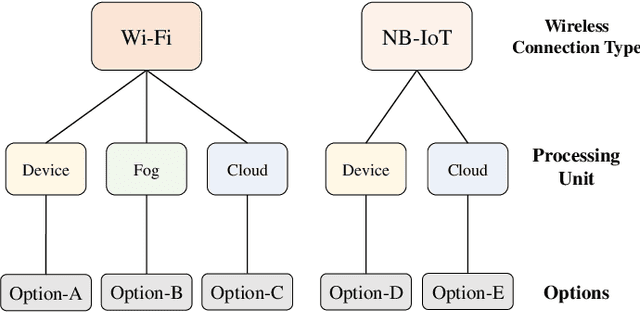
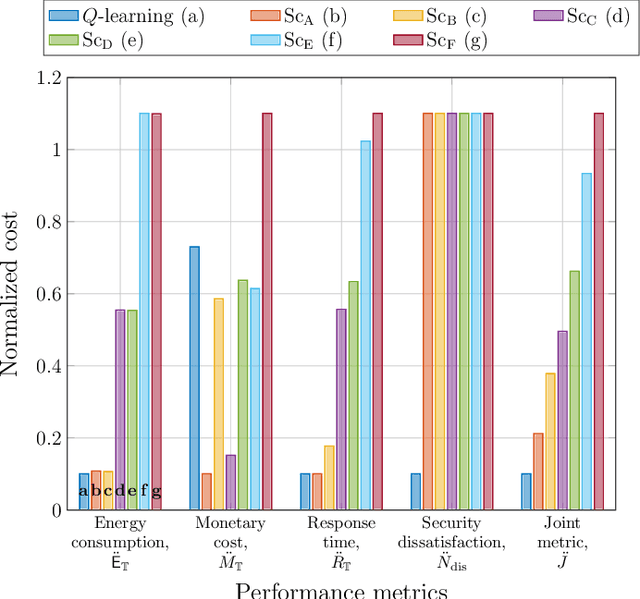
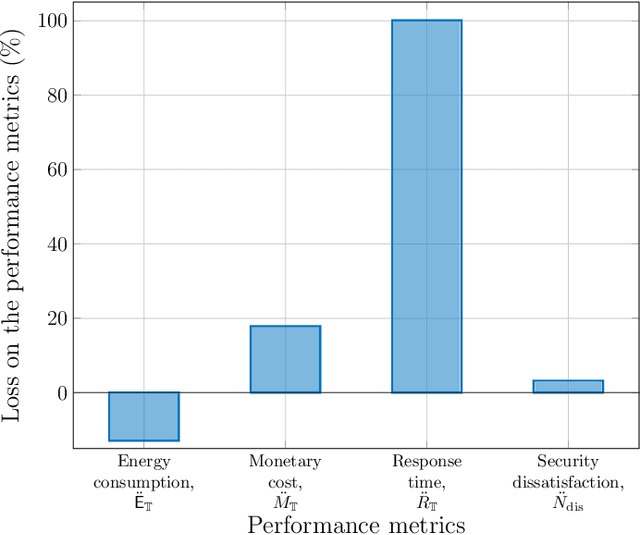
Abstract:A novel approach is presented in this work for context-aware connectivity and processing optimization of Internet of things (IoT) networks. Different from the state-of-the-art approaches, the proposed approach simultaneously selects the best connectivity and processing unit (e.g., device, fog, and cloud) along with the percentage of data to be offloaded by jointly optimizing energy consumption, response-time, security, and monetary cost. The proposed scheme employs a reinforcement learning algorithm, and manages to achieve significant gains compared to deterministic solutions. In particular, the requirements of IoT devices in terms of response-time and security are taken as inputs along with the remaining battery level of the devices, and the developed algorithm returns an optimized policy. The results obtained show that only our method is able to meet the holistic multi-objective optimisation criteria, albeit, the benchmark approaches may achieve better results on a particular metric at the cost of failing to reach the other targets. Thus, the proposed approach is a device-centric and context-aware solution that accounts for the monetary and battery constraints.
 Add to Chrome
Add to Chrome Add to Firefox
Add to Firefox Add to Edge
Add to Edge